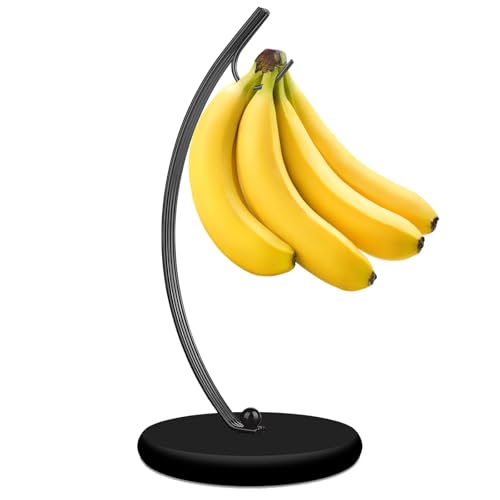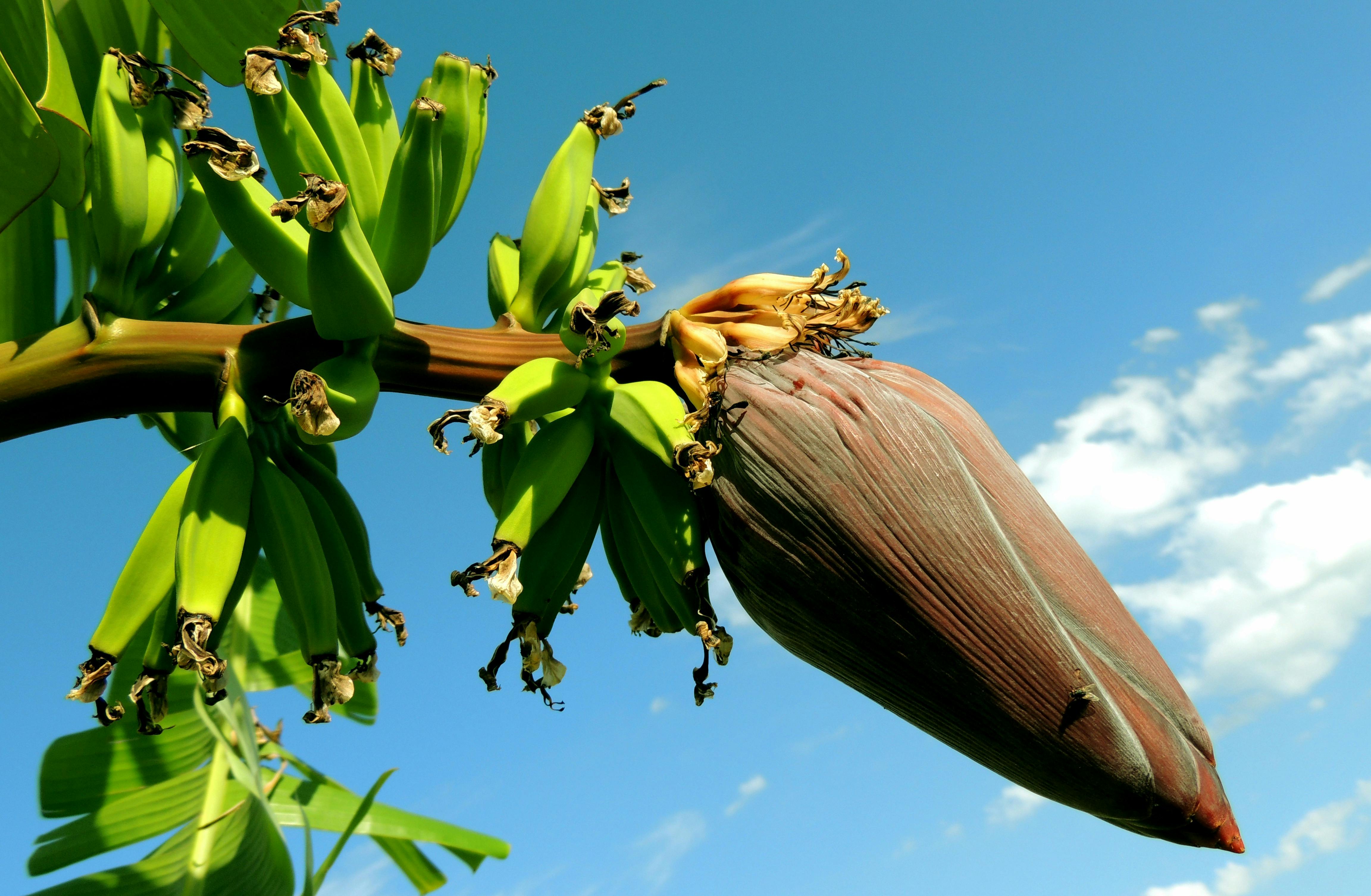Key Takeaways
- Rich Historical Roots: Bananas have been cultivated since around 5000 BCE in Southeast Asia, evolving from wild plants to a global staple through trade and exploration.
- Diverse Varieties: Over 1,000 banana types exist, including popular varieties like Cavendish and exotic ones like Blue Java, each offering unique flavors and uses.
- Nutritional Powerhouse: Packed with essential vitamins (C and B6), potassium, and dietary fiber, bananas support energy, heart health, and digestive wellness.
- Versatile Applications: Beyond eating, bananas are used in textiles, beauty products, biodegradable packaging, and traditional medicine, showcasing their multifaceted utility.
- Cultural Significance: Bananas play a prominent role in pop culture, art, and even space travel, highlighting their widespread influence and iconic status.
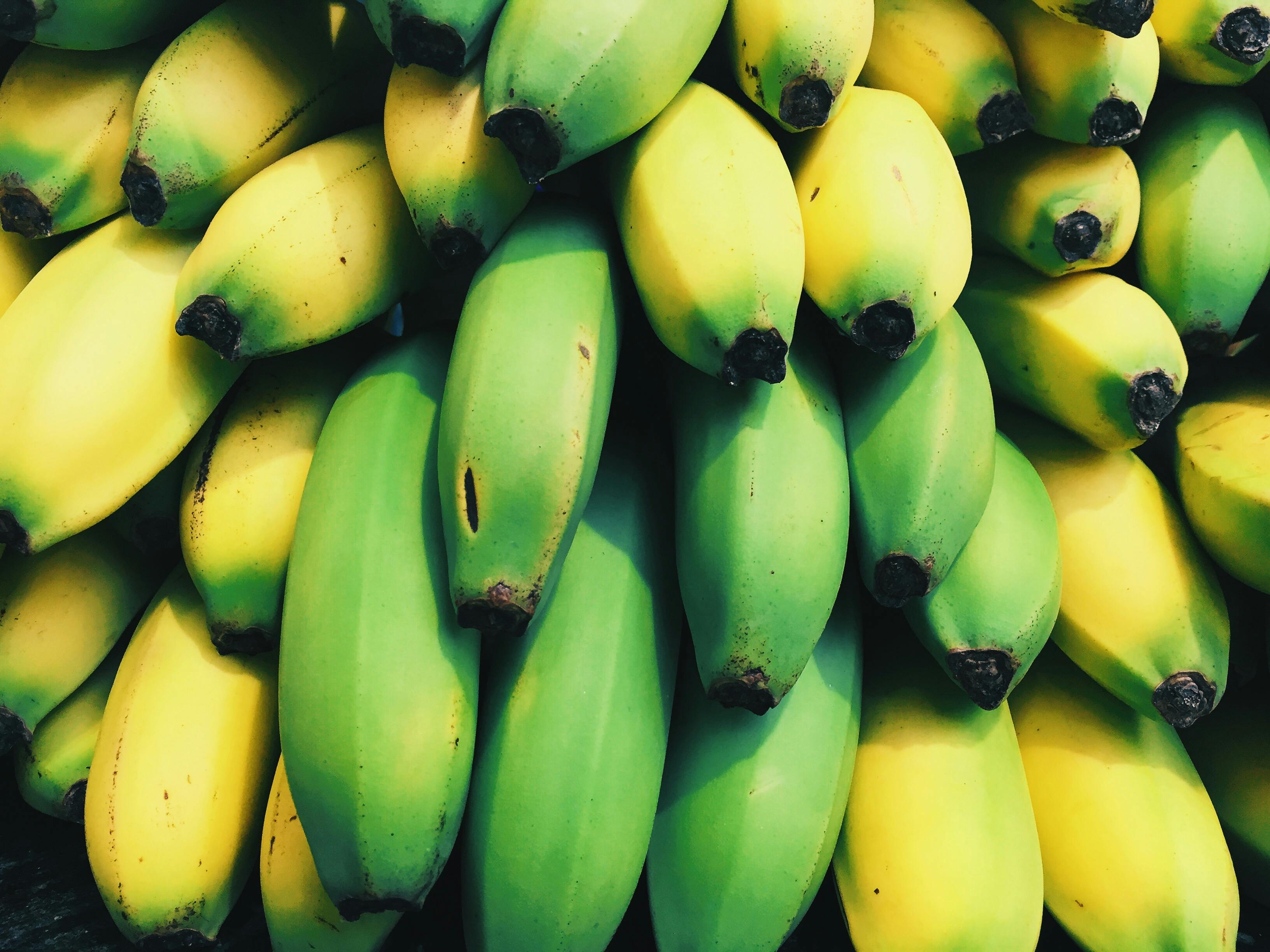
Bananas are more than just a tasty snack – they’re truly fascinating! I’ve always enjoyed eating bananas, but the more I learn about them, the more intrigued I become. From their unique history to unexpected health benefits, there’s so much you probably didn’t know about this beloved fruit.
Banana Origins and History
Bananas have a rich history spanning thousands of years. I love exploring how these fruits evolved from wild plants to global staples.
Early Cultivation
Bananas were first cultivated in Southeast Asia around 5000 BCE. Archaeological findings in Papua New Guinea indicate early domestication, which later spread to the Philippine Islands and India.
| Region | Time Period |
|---|---|
| Southeast Asia | ~5000 BCE |
| Papua New Guinea | Early domestication |
| Philippine Islands | Subsequent spread |
| India | Subsequent spread |
Spread to the World

Bananas reached Africa by the first century CE through trade routes. European explorers introduced them to the Americas in the 15th century, establishing plantations that increased their global availability.
| Region | Arrival Time | Method |
|---|---|---|
| Africa | By first century CE | Trade routes |
| Americas | 15th century | European exploration |
Diverse Banana Varieties
Bananas come in numerous shapes, sizes, and flavors. Exploring their diversity reveals a world beyond the standard yellow fruit.
Common Types
The Cavendish banana dominates global markets due to its resilience and sweet taste. Gros Michel, once popular, was replaced by Cavendish after a disease outbreak. Lady Finger bananas are smaller and sweeter, often preferred for desserts. Red bananas feature a reddish-purple skin and creamy flesh, adding variety to regular selections.
Exotic Varieties
Blue Java bananas, known as ice cream bananas, offer a vanilla-like flavor and smooth texture. Plantains are starchy and ideal for cooking, differing significantly from dessert bananas. Apple bananas, primarily grown in Hawaii, have a hint of apple flavor and firm texture. Each exotic variety brings unique qualities to both culinary uses and banana cultivation.
Health and Nutritional Benefits
Bananas offer a wealth of health and nutritional benefits that make them a staple in many diets. From essential vitamins to unique health advantages, this fruit supports overall well-being in various ways.
Essential Vitamins and Minerals
Bananas are packed with vital nutrients essential for daily health:
| Nutrient | Amount per 100g |
|---|---|
| Vitamin C | 8.7 mg |
| Vitamin B6 | 0.4 mg |
| Potassium | 358 mg |
| Magnesium | 27 mg |
| Dietary Fiber | 2.6 g |
These nutrients contribute to immune function, energy metabolism, and maintaining electrolyte balance.
Health Advantages
- Energy Boost: Bananas contain approximately 89 calories per 100g, offering a quick source of energy for physical activities.
- Digestive Health: With 2.6 grams of dietary fiber, bananas aid in regular bowel movements and prevent constipation.
- Heart Health: The high potassium content helps regulate blood pressure, reducing the risk of heart disease.
- Mood Enhancement: Vitamin B6 in bananas supports the production of neurotransmitters, promoting a positive mood.
- Bone Strength: Magnesium and potassium contribute to bone density and muscle function, enhancing overall skeletal health.
Unique Uses and Cultural Significance
Bananas extend far beyond their delicious taste, playing significant roles in various cultures and industries.
Beyond the Kitchen
Bananas serve multiple purposes outside the culinary world:
- Textiles: Banana fibers create durable fabrics used in clothing and household items.
- Beauty Products: Extracts from banana peels appear in shampoos, face masks, and moisturizers for their nourishing properties.
- Biodegradable Packaging: Companies utilize banana leaves to produce eco-friendly packaging alternatives.
- Traditional Medicine: In several cultures, banana parts treat ailments like indigestion and skin conditions.
- Art and Craft: Artists incorporate banana elements into sculptures, paintings, and handicrafts, showcasing their versatility.
Bananas in Pop Culture
Bananas frequently appear in entertainment and media:
- Music: Bands like The Velvet Underground and artists such as Rihanna reference bananas in their songs, symbolizing fun and vibrancy.
- Movies and TV Shows: Iconic scenes, like the slippery banana peel gag in cartoons, highlight bananas’ comedic appeal.
- Advertising: Brands use bananas in commercials to emphasize freshness, energy, and a playful image.
- Literature: Authors incorporate bananas as symbols or plot devices, enriching storytelling with their unique characteristics.
- Memes and Internet Culture: Bananas feature prominently in memes, often representing humor and viral trends.
| Category | Examples |
|---|---|
| Textiles | Banana fiber clothing, home textiles |
| Beauty Products | Shampoos, face masks, moisturizers |
| Biodegradable Packaging | Eco-friendly containers, utensils |
| Traditional Medicine | Treatments for indigestion, skin conditions |
| Art and Craft | Sculptures, paintings, handicrafts |
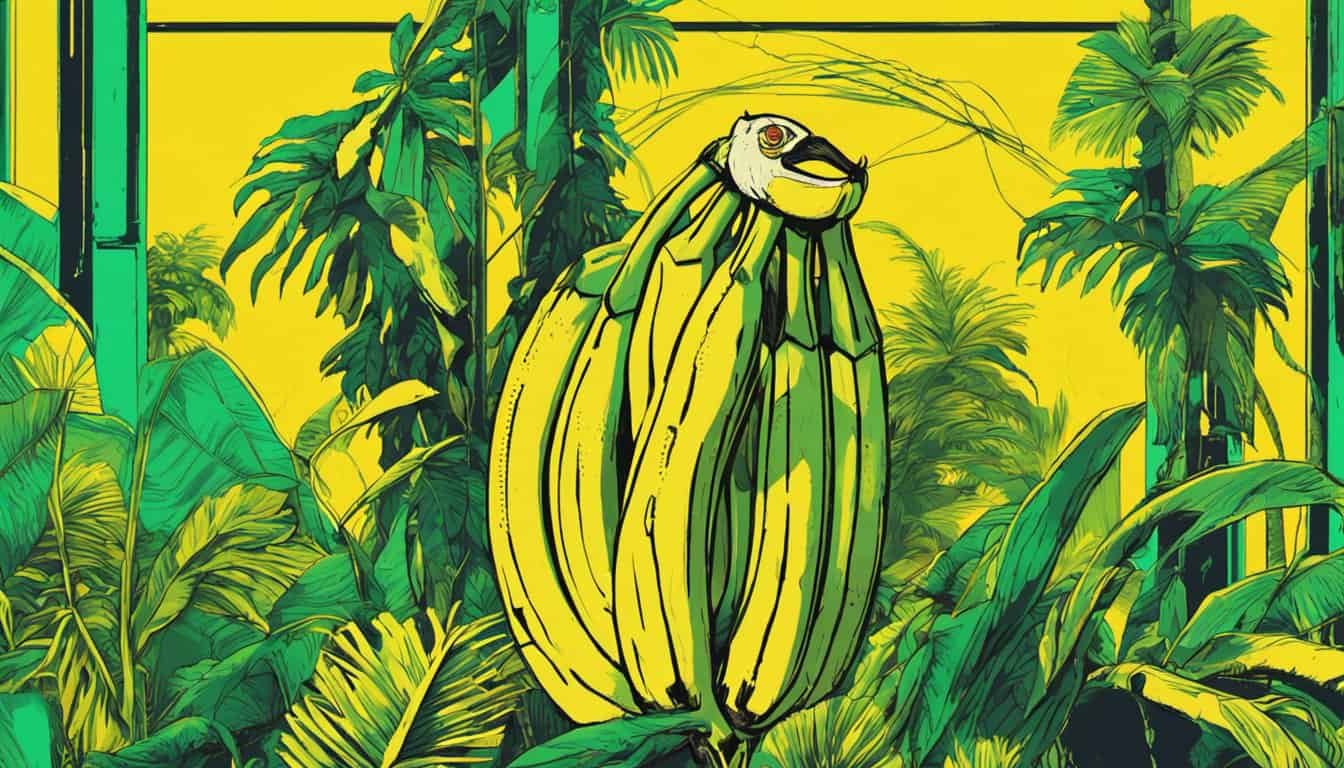
Bananas’ diverse applications and cultural representations underscore their importance and ubiquity in everyday life.
Banana Fun Facts
Bananas are more fascinating than you might think. Here are some surprising statistics and interesting trivia that highlight their unique attributes.
Surprising Statistics
- Global Production: In 2022, the world produced approximately 153 million metric tons of bananas¹.
- Consumption Rates: The average American consumes about 27 pounds of bananas each year².
- Variety Count: There are over 1,000 different banana varieties worldwide³.
- Economic Impact: Bananas generate over $17 billion in annual revenue globally⁴.
| Statistic | Value |
|---|---|
| World Production (2022) | 153 million metric tons¹ |
| Average American Consumption | 27 pounds/year² |
| Banana Varieties | 1,000+³ |
| Global Revenue | $17 billion⁴ |
¹ Food and Agriculture Organization
² USDA Reports
³ Banana Growers Association
⁴ Market Research Bureau

Interesting Trivia
- Botanical Classification: Bananas are classified as berries⁵.
- Radioactive Nature: Bananas contain potassium-40, making them slightly radioactive⁶.
- Historical Significance: The banana was first cultivated in Southeast Asia around 5000 BCE⁷.
- Cultural Symbolism: In many cultures, bananas symbolize fertility and prosperity⁸.
- Space Travel: Bananas have been sent to space as part of astronaut diets⁹.
« Banana Waste Management: From Peel to Power – 5 Innovative Ways to Boost Sustainability
Banana Jokes That Will Make You Laugh: 25 Hilarious Puns to Brighten Your Day »
⁵ Botanical Society
⁶ National Institutes of Health
⁷ Historical Agricultural Records
⁸ Cultural Anthropology Studies
Conclusion
Bananas are truly fascinating beyond their sweet taste. I’ve enjoyed diving into their rich history and discovering the many ways they touch our lives. From their diverse varieties to their impressive health benefits, it’s clear that bananas are more than just a common fruit.
Next time you peel a banana, you’ll appreciate the incredible journey it has taken and the versatility it offers. Whether you’re enjoying them in a smoothie or using them in a creative project, bananas never cease to amaze me. Here’s to celebrating this wonderful fruit in all its forms!
Frequently Asked Questions
What is the origin of bananas?
Bananas originated in Southeast Asia around 5000 BCE. They were first cultivated in this region before spreading to Papua New Guinea, the Philippine Islands, and India. Through trade routes, bananas reached Africa by the first century CE and were introduced to the Americas by European explorers in the 15th century. This spread led to the establishment of plantations, making bananas a globally available fruit.
What are the most common types of bananas?
The most common banana type is the Cavendish, which dominates global markets. Other popular varieties include the smaller, sweeter Lady Finger bananas and the reddish-purple Red bananas. Historically, the Gros Michel was widespread until a disease outbreak replaced it. Exotic varieties like Blue Java, known for their vanilla-like flavor, starchy Plantains for cooking, and Apple bananas from Hawaii with an apple hint, also contribute to banana diversity.
What are the health benefits of eating bananas?
Bananas are rich in essential vitamins and minerals such as Vitamin C, Vitamin B6, potassium, magnesium, and dietary fiber. They provide a quick energy boost, aid digestive health, promote heart health through potassium regulation, enhance mood with Vitamin B6, and contribute to bone strength. These nutrients support immune function, energy metabolism, and overall well-being.
How are bananas used beyond eating?

Beyond culinary uses, bananas have various applications. Banana fibers are used to create durable textiles, while extracts from banana peels are incorporated into beauty products. Banana leaves serve as biodegradable packaging, and traditional medicinal uses are prevalent in many cultures. Additionally, bananas appear in art, crafts, and pop culture, highlighting their versatility and cultural significance.
How diverse are banana varieties worldwide?
There are over 1,000 different banana varieties globally, each with unique shapes, sizes, and flavors. Common types include the Cavendish and Gros Michel, while exotic varieties like Blue Java and Apple bananas offer distinct tastes. This diversity allows bananas to be used in a wide range of culinary and agricultural applications, contributing to their global popularity and economic importance.
What is the global production of bananas?
In 2022, the world produced approximately 153 million metric tons of bananas. This high production level supports an annual global revenue of over $17 billion. The widespread cultivation and consumption of bananas make them one of the most important fruit crops worldwide, sustaining economies and providing a staple food for many populations.
Are bananas really berries?
Yes, botanically, bananas are classified as berries. This is because they develop from a single ovary and contain multiple seeds, fitting the botanical definition of a berry. Additionally, bananas contain potassium-40, making them slightly radioactive, which is a fun and surprising fact about this common fruit.
How do bananas contribute to culture and tradition?
Bananas hold cultural significance in many societies. They symbolize fertility and prosperity in various cultures and are used in traditional medicinal practices. Bananas also feature prominently in art, music, movies, and advertising, reflecting their vibrant and playful image. Their presence in pop culture and daily life underscores their importance beyond just being a food source.
Why did the Gros Michel banana decline?
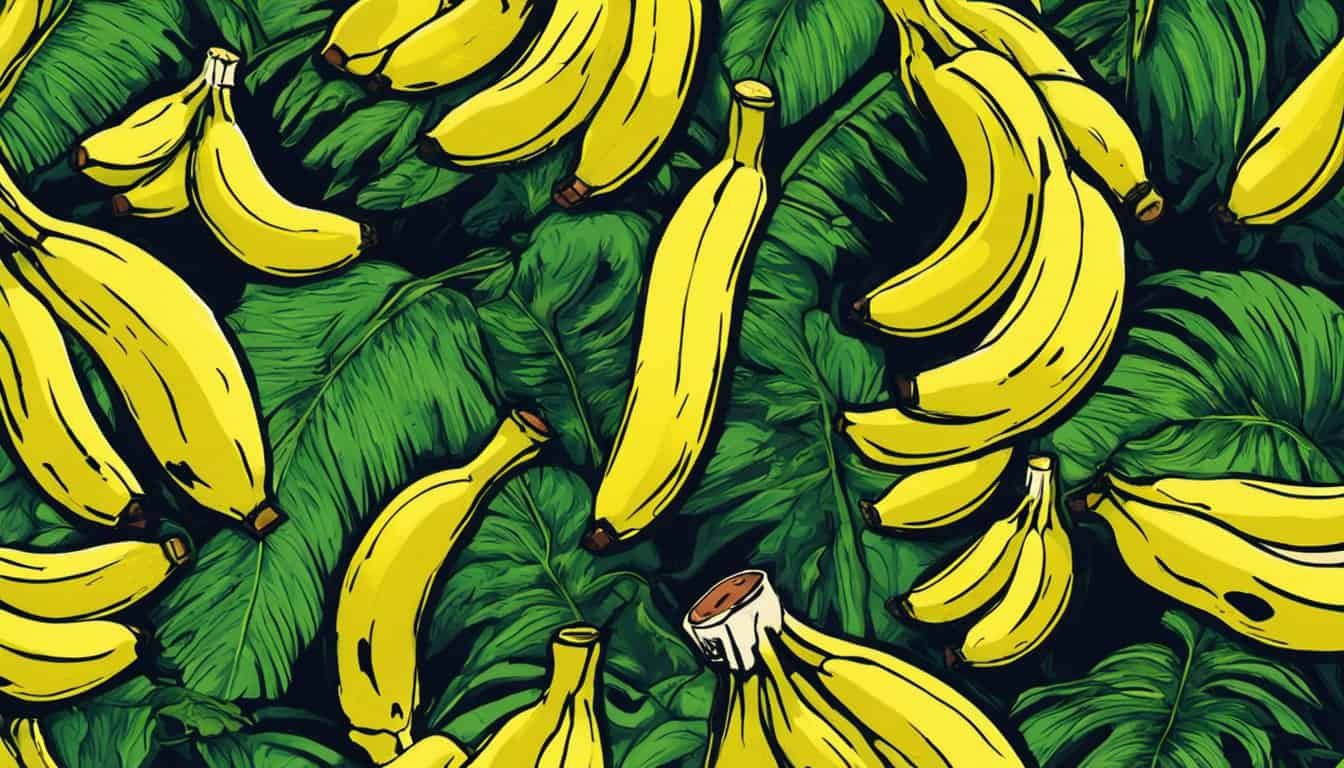
The Gros Michel banana was once the dominant variety in global markets. However, it was largely wiped out by a disease outbreak caused by the Panama disease fungus. This devastating fungal infection led to the decline of Gros Michel plantations, paving the way for the Cavendish banana to take over as the primary commercial variety due to its resistance to the disease.
Can bananas be part of a space diet?
Yes, bananas have been included in astronaut diets during space travel. Their nutritional value, ease of storage, and portability make them an ideal fruit for space missions. Bananas provide essential vitamins and minerals while being a convenient and healthy snack option for astronauts in the unique environment of space.
What fun facts exist about bananas?
Bananas are classified as berries and contain potassium-40, making them slightly radioactive. In 2022, the average American consumed about 27 pounds of bananas each year. Bananas are also used in biodegradable packaging and beauty products. Additionally, they have historical significance as symbols of fertility and have even been featured in internet memes, showcasing their playful and enduring presence in popular culture.




